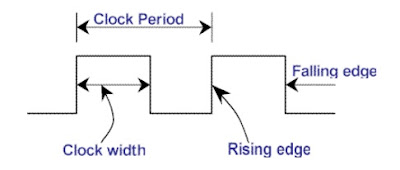Triggering basically means switching. The way in which a switch or an event is triggered can be different, based on the user’s requirements. Edge and Level Triggering, are both common terms when using sequential circuits like Flip Flops triggered by a clock signal. Essentially, this is how a clock signal looks like,
LEVEL TRIGGERING:
We can notice two voltage levels, VH and VL. Those are the two levels at which the event can be triggered. Suppose we want to turn on an LED at the positive clock level. What it means is that the LED can turn on at any moment when the voltage is at VH. This is known as level triggering, where the event is triggered whenever a clock level is encountered. The event may start at any moment during the time for which the clock signal is at the given level.
EDGE TRIGGERING:
In the image shown below we observe two edges, Rising Edge and Falling Edge, respectively.
When an event is triggered at a rising / falling edge, it is said to be edge triggered. Suppose that, the LED we wanted to turn on, but now by rising edge triggering. It means that the LED turns on every time the clock makes a transition from VL to VH level, and not when it is at the respective levels. The voltage level of the clock doesn’t matter much and the LED turns on the moment there is a transition from low voltage level to high voltage level.

